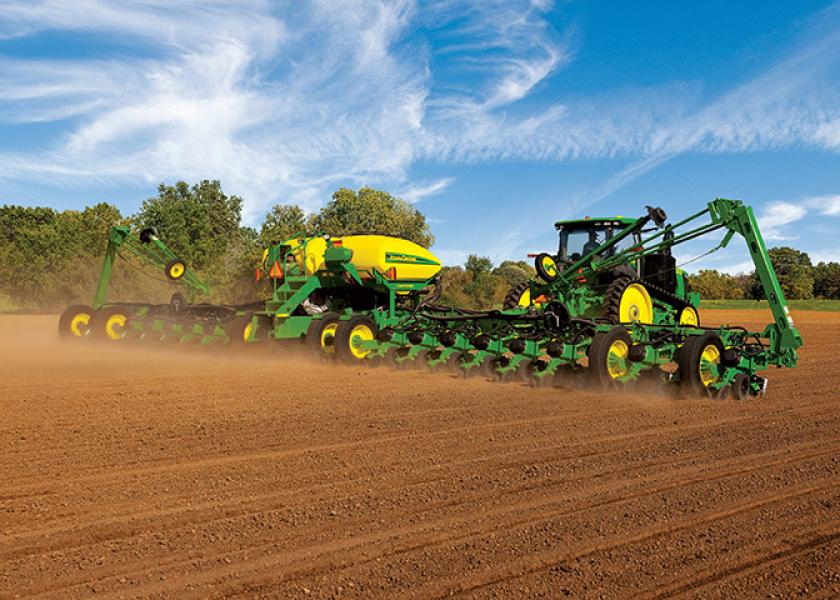4 Ways to Check if Your Seed Monitor is Lying

Planting has been running smoothly, but you notice on the seed monitor a few rows are consistently planting a higher or lower population. Not thousands of seeds per acre off the norm, but enough to annoy you. Here are things to check:
1. Is the monitor lying? Dig, then dig some more, to confirm whether a seed tube sensor is dirty or inaccurate. If the actual seed count in the furrow is accurate, switch seed tube sensors between rows to identify if the problem is in the sensor or the monitor/wiring harness.
2. If the seeds in the furrow indicate there is a problem with the seed meters on specific rows, check that the tension on finger meter plates and vacuum seed plates, are the same compared to other rows. Check by removing seed meters from the row unit and turning them by hand. The resistance to turning the T-handle on finger meters or the drive hub on vacuum meters should be consistent across all rows. If a meter turns more easily or harder than other meters it will plant higher or lower populations than other meters. I made a coupler so I could use a 1/4”-drive torque wrench to make sure resistance was consistent across all seed meters.
3. Check the misbehaving finger meters, vacuum meters and seed tubes for contamination. Seed bag strings, bulk bag labels, even small rocks can interfere with seed movement and flow. (Rocks? Yup. More than one customer learned that pulling seed tenders down rock roads at high speeds can flip small rocks into the seed tender’s auger hopper, which cause all sorts of problems in seed meters.)
4. Make sure all seed meter components are consistent. I once spent an hour diagnosing why one row on an older vacuum planter insisted on planting higher than its partners. I eventually noticed that the seed holes in that row’s seed plate were round, while all the other plates were slightly oval from wear. “Oh, yeah,” said the customer, “that’s the row with the new seed plate.”’
Read More from Dan:
Moisture is the Enemy of Farm Machinery
5 Guarantees When Working on Machinery
Planter Oil Leaks: Common Causes and Fixes
A Few Useful “Pocket Tools” for Planting







